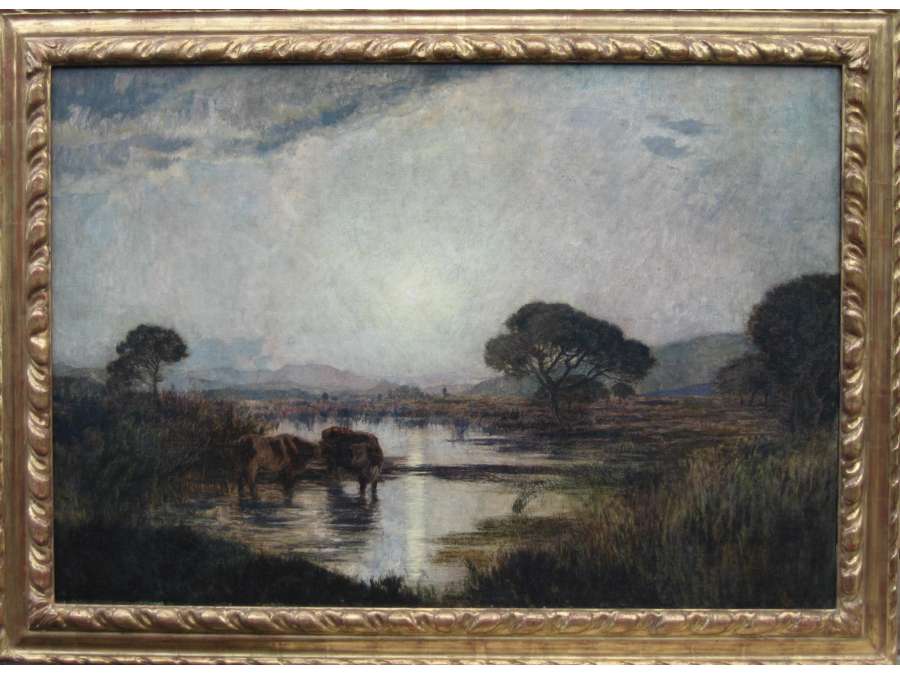The Grimaud marsh , 1913
Oil on canvas signed lower right
Dimensions: 85 x 123 cm
Reproduced in André Michel, “Paintings and Pastels of René Ménard”, Paris, Librairie Armand Collin, p. 56
René Ménard was born into a family of intellectuals from the Parisian bourgeoisie. Son of the secretary of Decorative Arts in Paris, he grew up surrounded by painting and art. The famous painters of history surround and frequent his family; Corot, Millet and the painters of the Barbizon School. He studied at the Académie Julian in 1880, where he met Paul Baudry, William Bouguereau and Henri Lehmann.
He exhibited at the Salon de la Secession in Munich, at the Salon de la Libre Aesthetic in Brussels, joined the Black Band group, which rejected the light colors of post-impressionism, the dominant aesthetic at the turn of the century. The painter was appointed professor at the Grande Chaumière in 1904, he exhibited many times at the Georges Petit gallery. The end of his career was crowned with the major cycles that the State ordered from him, from the Sorbonne to the Institute of Chemistry; the State made him an Officer of the Legion of Honor in 1910.
This table illustrates the painter's concerns for maturity. Although requested by state orders, he never stops looking at the facts of nature. This time, it represents the nature occupied by man, finely metaphorized by the two cows, certainly from a herd of shepherds. The Grimaud marshes are fertile land between Saint-Tropez and Sainte-Maxime. He reinterprets the luminous landscapes of the South of France. The painting is tinted with the twilight glow that the artist gives to his paintings.

 English
English  Français
Français









